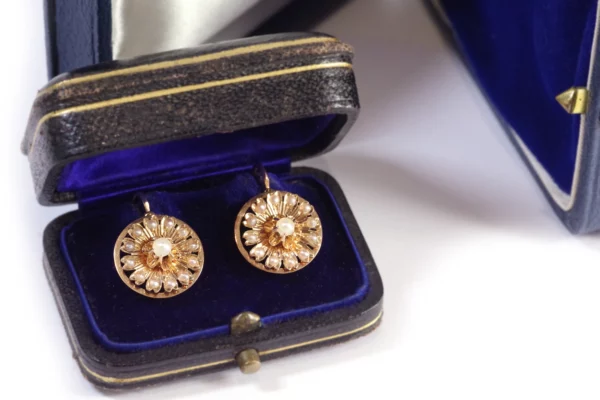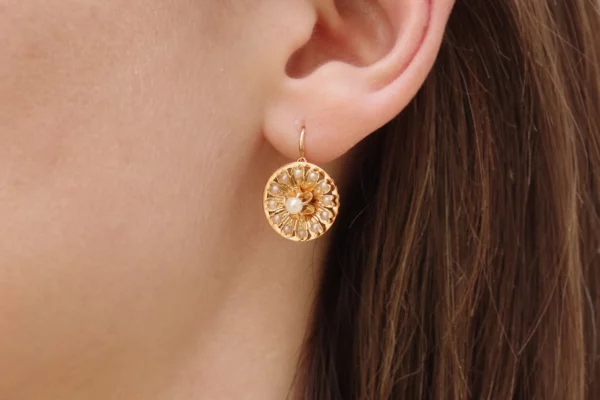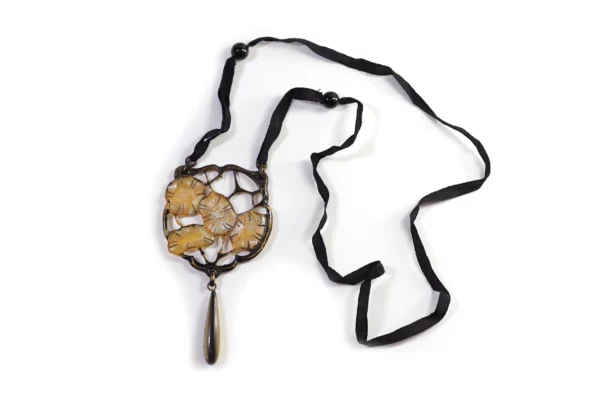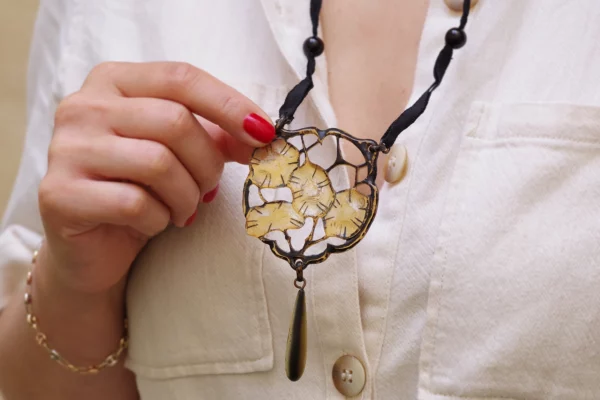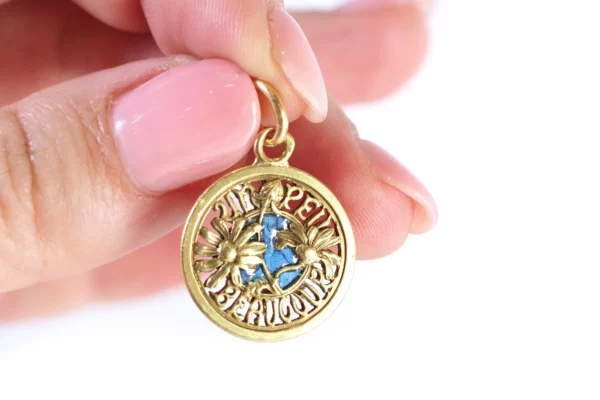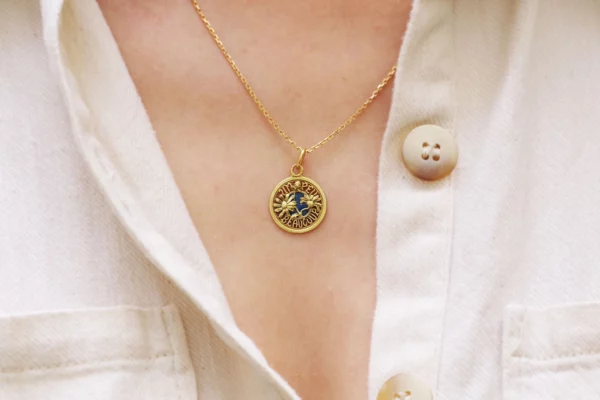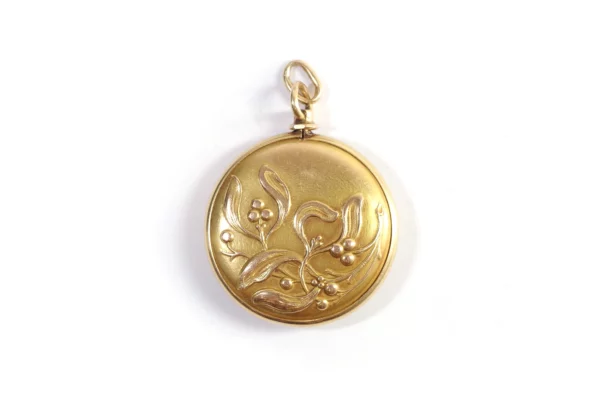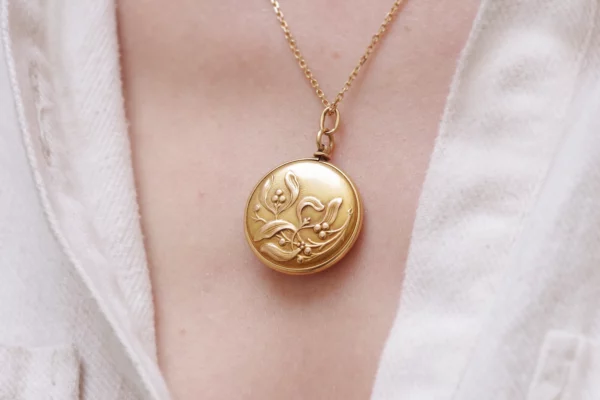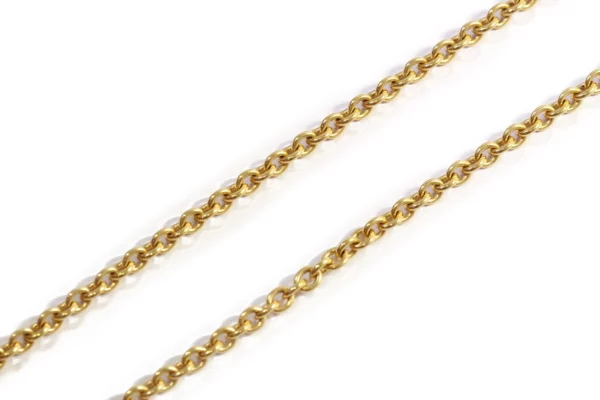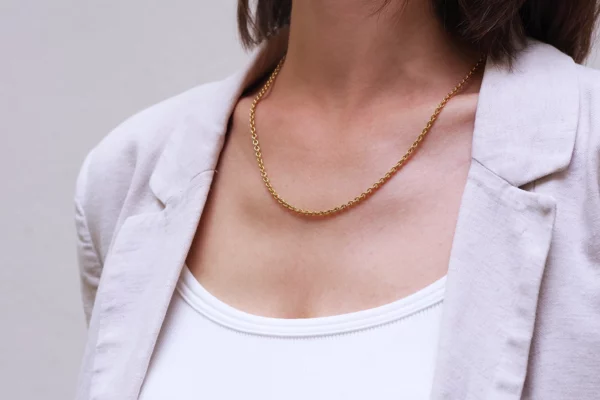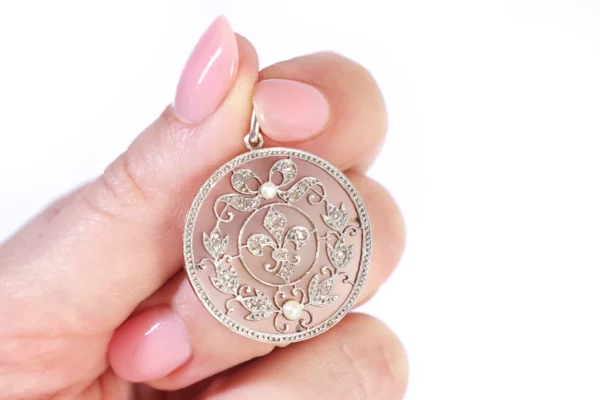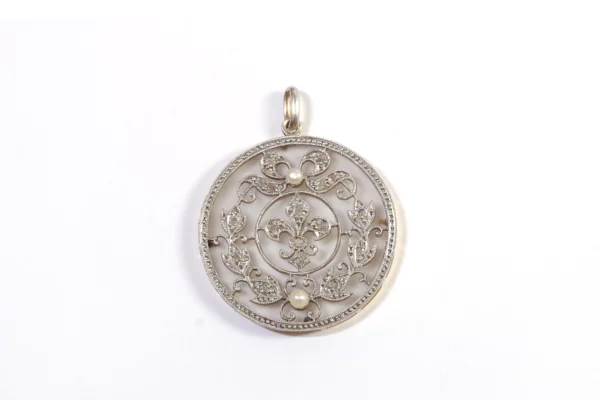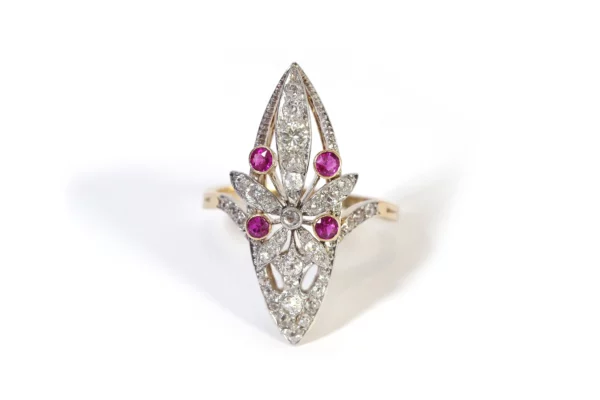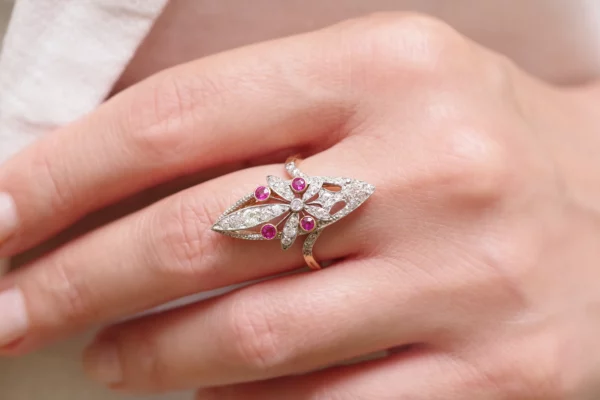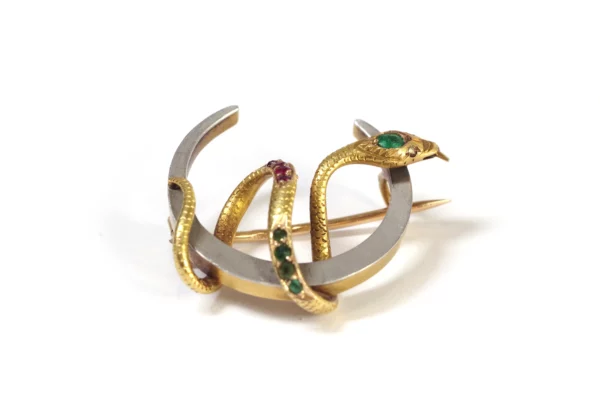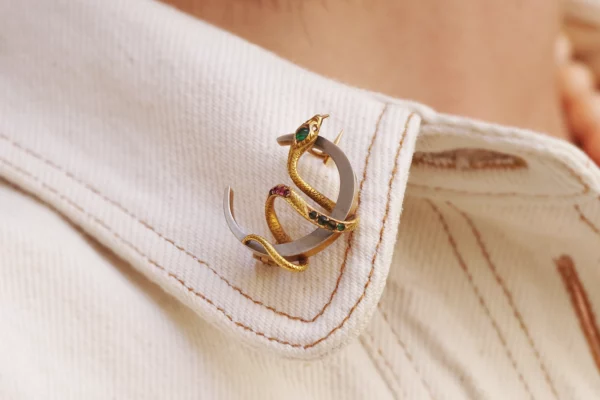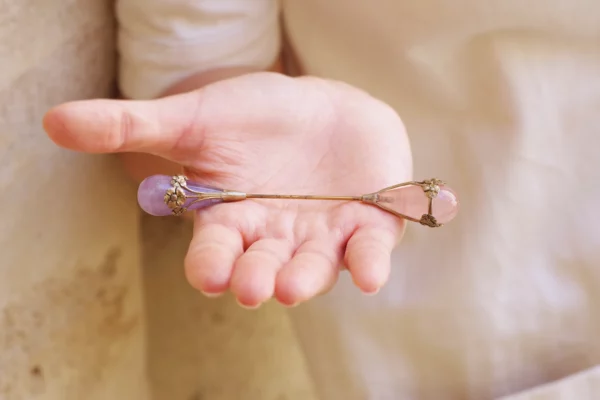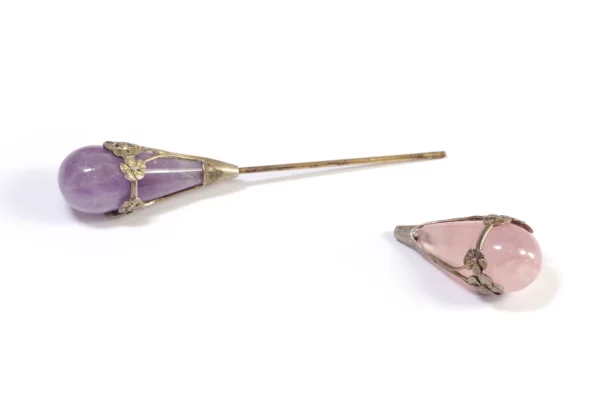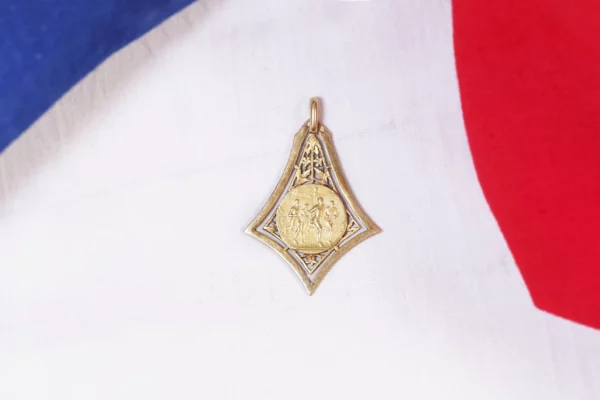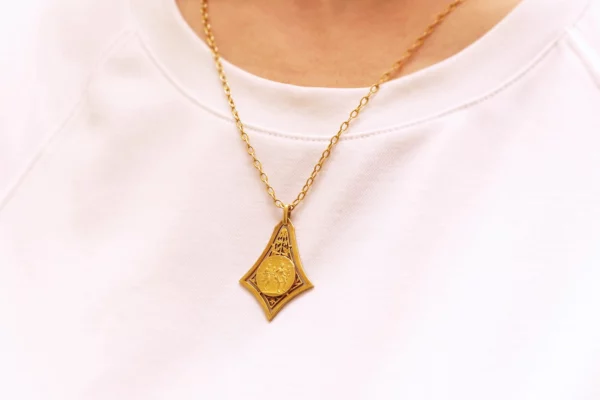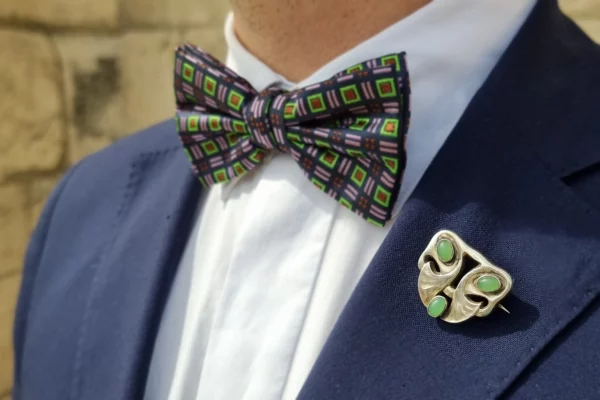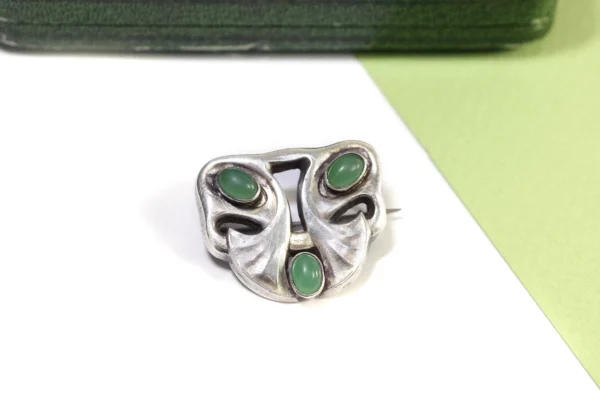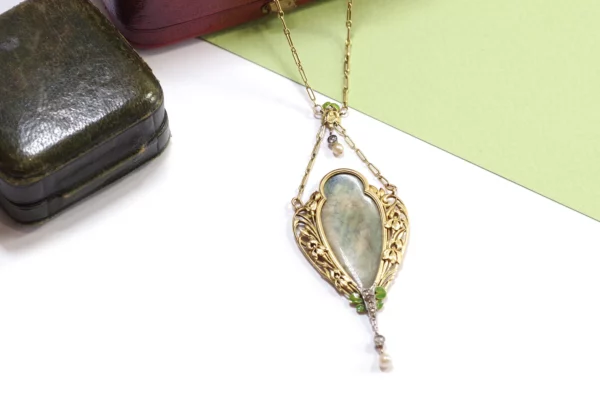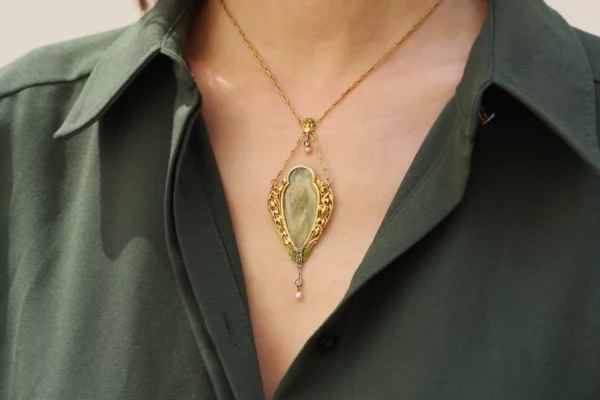Art Nouveau is a great artistic movement of the early 20th century.Art Nouveau began at the end of the 19th century, with its first beginnings from 1880 to 1990. It is the very famous René Lalique who will project this movement and its actors on the international scene. All in curves and untied, the Art Nouveau jewels are inspired by nature, feminine forms, tales and pagan legends and the Middle Ages. The great novelty in Art Nouveau jewelry is also in the materials and technicality: we return to ancestral know-how and crafts, as the art of stained glass that will inspire the master enamellers. Jewelers are using less valuable stones, they are looking for a visual rendering. Large and long pearls, glass, lacquer, moonstones, stones of little used colors like peridot.

